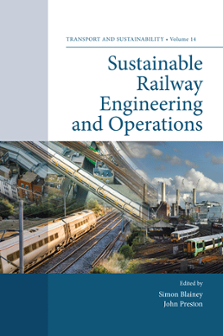
Index
Sustainable Railway Engineering and Operations
ISBN: 978-1-83909-589-4, eISBN: 978-1-83909-588-7
ISSN: 2044-9941
Publication date: 8 August 2022
Citation
(2022), "Index", Blainey, S. and Preston, J. (Ed.) Sustainable Railway Engineering and Operations (Transport and Sustainability, Vol. 14), Emerald Publishing Limited, Leeds, pp. 331-343. https://doi.org/10.1108/S2044-994120220000014021
Publisher
:Emerald Publishing Limited
Copyright © 2022 Emerald Publishing Limited
INDEX
Note: Page numbers followed by “n” indicate notes.
- Prelims
- Chapter 1: Introduction
- Chapter 2: System and Route Planning
- Chapter 3: Railway Station and Interchange Design: A Station Design that Perfectly Fits the Quality Needs of Passengers
- Chapter 4: Community Rail: Helping our Railways to Deliver Social, Environmental and Economic Sustainability
- Chapter 5: The Railway Track System: Performance and Trackbed Design
- Chapter 6: Railway Earthworks: Design and Performance
- Chapter 7: Noise and Vibration
- Chapter 8: Rail Vehicle Dynamics
- Chapter 9: Passenger Rolling Stock
- Chapter 10: Sustainable Urban Railways
- Chapter 11: High-Speed Rail
- Chapter 12: Capacity, Timetabling and Sustainability
- Chapter 13: Signalling and Traffic Management
- Chapter 14: Towards a Sustainable Digital Railway
- Chapter 15: Regulation, Organisation and Governance for Sustainable Railways
- Chapter 16: Towards a Financially Sustainable Railway
- Chapter 17: Rail Safety
- Chapter 18: Interior Passive Safety
- Chapter 19: Conclusions
- Index